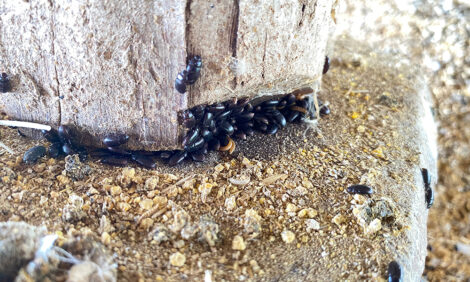



Decrease Your Water Use and Increase Your Bottom Line
In this article in the series Commercial Egg Tips, University of Georgia's Cooperative Extension Service offers tips on how shell egg plants can use water more efficiently and thereby increase their bottom line.In 2008, Georgia commercial egg plants processed almost 14 million cases of table eggs (USDA, 2009). A survey of water use in US shell egg processing facilities in 2005 showed that, on average, shell egg plants use 1.5 gallons of water per case, with 36 per cent of plants reporting using less than one gallon per case and 30 per cent utilising more than two gallons per case (Jones and Northcutt, 2005). This wide variation in water use indicates that significant opportunities exist to increase efficiency of water use, decrease waste-water generation, and increase a commercial egg processor’s bottom line.
Interestingly, statistical analysis of the data collected in the 2005 survey showed that neither the region of the US where the plant was located, the size of the facility, nor the type of operation (in-line, off-line or mixed) affected the average gallons of water used to process a case of eggs. Survey data analysis showed that water use was not related to the length of the processing day nor to the number of days the plant operated per week. Neither the age of the facility or the equipment, or manufacturer of the equipment had an influence on water use. Not even the addition of a flat washer or frequency of sanitation operations had any effect on average water use. So what accounts for the wide variation in water use at commercial egg plants? One answer to this question lies in understanding water loss and its affect on efficient water use.
Total Water Use can be divided into Intended Water Use and Water Loss. That is, once water passes through your plant’s water meter (and you pay for it) a certain portion of the water makes it to its intended use, while another portion is lost. The most common examples of Water Loss are leaks. Although leaks tend to be viewed as a simple nuisance that require more dollars to fix than stopping the leak would save, their impact on total plant water use and your bottom line should not be overlooked. And the frequency and volume of leaks varies widely by location.
A simple worksheet has been developed for processors to quickly assess the fiscal impact leaks in your plant have on the bottom line. Using a free internet-based Waterwiser Drip Calculator program [click here]. Copies of this worksheet can be used throughout the plant to start saving water today.
References
USDA, 2009. Chicken and Eggs: 2008 Summary. Pou 2-4(09). National Agricultural Statistics Service, US Department of Agriculture, Washington, D.C.
Jones, D.R. and J.K. Northcutt, 2005. A survey of common practices in shell egg processing facilities and water use. International Journal of Poultry Science 4(10): 734-736.











